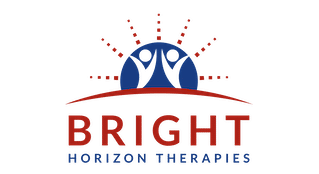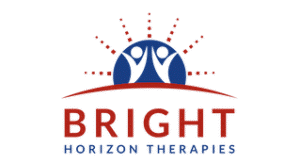Many of the clients who choose to work with me are adults with childhood trauma—a journey I intimately understand, having lived through similar challenges. Research shows that 15 to 43% of children experience at least one traumatic event, according to the U.S. Department of Veterans Affairs. These experiences can lead to a spectrum of symptoms, ranging from various manifestations of trauma to a diagnosis of PTSD.
Most adults with childhood trauma have symptoms of trauma but can’t connect them with what has happened to them. Although these symptoms can be profoundly challenging, there is hope for recovery and healing. This article explores the various forms of childhood trauma, offers guidance on recognizing the signs, and provides practical strategies for healing and reclaiming your life. Discover how understanding and addressing childhood trauma can lead to resilience and empowerment.
Understanding childhood trauma
Childhood trauma is also called developmental trauma since it occurs during the vulnerable phase during our childhood and adolescence, where the active development of our autonomic nervous system and our personality have not yet fully matured. Therefore, childhood trauma can affect the development of the window of tolerance, attachment styles, and personality.
As with any trauma, it is not the event that matters but how the child has experienced the event. Therefore, development trauma refers to experiences in our childhood or adolescence that overwhelm our capacity to integrate them emotionally. Additionally, they can be an objective or subjective threat to our lives, dignity or caregivers’ lives.
For example, if an individual grows up in a home where a caregiver uses alcohol or drugs, they can experience developmental trauma. Other experiences that can lead to developmental trauma are neglect or violence in a home. Additionally, if an adolescent is targeted by systemic oppression, racism, discrimination or bullying, it may cause developmental trauma.
Developmental trauma is also often called adverse childhood experiences(ACEs). One of the most significant studies on this topic, the ACE Study conducted by the CDC and Kaiser Permanente, found that nearly two-thirds (about 64%) of adults reported at least one adverse childhood experience. These experiences include physical, emotional, and sexual abuse, neglect, and various forms of household dysfunction.
Long-term effect of childhood trauma
The prevalence of childhood trauma is essential to recognize because of its significant long-term impact on mental, emotional, and physical health. Adults with childhood trauma are at higher risk for a variety of issues, including:
- Mental health issues: Unresolved childhood trauma may lead to increased rates of depression, anxiety, PTSD, and substance abuse.
- Physical health problems: Adverse childhood experiences can increase the risk of chronic illnesses such as heart disease, diabetes and chronic pain.
- Inner fragmentation: The theory of structural dissociation describes how severe trauma can cause a person’s personality to fragment into distinct parts as a coping mechanism to manage overwhelming experience
- Relationship difficulties: Due to the impact of trauma on the attachment styles of a child and the inner fragmentation, childhood trauma can lead to difficulty in forming and maintaining relationships. These are complex inner dynamics that vary for each individual.
While childhood trauma can have profound long-term effects on mental, emotional, and physical well-being, adults with childhood trauma can actively pursue healing and transformation through resilience, self-empowerment, and supportive interventions. Neuroscience shows that healing is possible: thanks to neuroplasticity, the brain can recover and adapt, allowing for meaningful recovery from childhood trauma.
Signs of childhood trauma in adulthood
Many adults with childhood trauma experience symptoms, but they can’t connect these symptoms to what has happened to them. Therefore, it is often the first step to explore the different symptoms of childhood trauma. These are observable signs and behaviours that can indicate that someone is experiencing the effects of past trauma. The symptoms typically vary widely between individuals and can manifest differently.
Emotional and psychological symptoms
One sign of childhood trauma is that the individual experiences a dysregulated nervous system. They may have difficulties managing emotions, leading to intense mood swings. Some adults with childhood trauma experience long periods of hyperarousal, including constantly feeling on edge or being easily startled. However, others feel stuck in hyperarousal, i.e. they feel numb and immobilized. Additionally, others may swing between both states.
Another symptom is that the individual has persistent feelings of sadness, hopelessness or worthlessness. Some people experience chronic worries, fear, anxiety or panic attacks. Another sign of childhood trauma is if an individual has issues with building trust or fear of abandonment.
Furthermore, some people may re-experience traumatic events through flashbacks, nightmares, or intrusive thoughts. Additionally, some may want to avoid reminders of the trauma. Some people may feel dissociated and feel disconnected from themselves or their surroundings. They may have memory gaps regarding specific periods, events, or personal information.
Many people who have experienced childhood trauma have grown up in an environment that wasn’t safe. As a protective coping mechanism, they have developed parts afraid of vulnerability or showing emotions. These parts can hinder an individual from creating open and healthy relationships with others.
Moreover, many adults with childhood abuse tend to be perfectionistic or overachievers. They strive for perfection or set excessively high standards to gain approval and avoid shame, guilt or criticism.
Attachment-related symptoms
People who have experienced childhood abuse are more likely to experience anxious (ambivalent), avoidant or disorganized attachment styles. The signs vary depending on the attachment style of the individual.
People with an anxious attachment style may experience a desire for closeness combined with fear of abandonment and heightened emotional responses. Some people with anxious attachment styles may have a very high need for reassurance and be very dependent on their partner.
People with avoidant attachment styles may avoid emotional closeness in relationships, suppress emotions, withdraw and cope with difficult situations alone or withdraw if their partner wants to be emotionally closer. In general, individuals with an avoidant attachment style feel discomfort with intimacy and can be hyper-independent.
An individual with a disorganized attachment style may need to be more consistent in their relationships with others. They want to be extremely close or extremely distant from others and have difficulty being vulnerable with others. Furthermore, they may feel anxious if others want to be close to them and may avoid others.
Struggles with healthy boundaries
An adult with childhood trauma is more likely to have difficulties with recognizing and setting healthy boundaries. Usually, this pattern is caused by a variety of reasons. The most common ones are that the individual grew up in an environment where they weren’t allowed to have boundaries. Additionally, trauma often causes a disconnect between our bodies and our boundaries are in our bodies. We cannot know our boundaries if we are disconnected from our bodies.
Furthermore, the emotional parts that develop due to structural dissociations may prevent the individual from setting healthy boundaries. While there are complex reasons why individuals don’t set healthy boundaries, we can overcome them with patience and persistence during recovery. Curious about your boundary-setting skills? Take our Healthy Boundaries Quiz to gain insights and start building stronger relationships.
Symptoms associated with structural dissociations
In a simplified way, structural dissociation describes the split that occurs during traumatic experiences: our brain divides into a logical part connected with the left brain and emotional parts that hold the traumatic wounds associated with the right brain. Since the traumatic experiences were too much to handle, the emotional parts were often hidden behind a wall. However, they seek integration and may suddenly emerge in similar situations in the present moment. As a result, adults with childhood trauma may experience intense emotions disproportionate to the current experience.
Structural dissociation is related to the symptoms of a dysregulated nervous system. Common parts related to childhood trauma are fight and flight parts, freeze and fawn parts and attach parts. Additionally, adults with childhood trauma may experience parts that use self-injury, parts that are suicidal, or parts that use addictive behaviours to regulate a dysregulated nervous system. Moreover, people may experience parts that don’t trust or have a sense of terror. Some people also experience shaming, punitive and controlling voices or beliefs.
Recognizing the symptoms of childhood abuse is the first step toward healing. By understanding these signs and seeking appropriate support and interventions, adults with childhood trauma can work through their past trauma, develop healthier coping mechanisms, and build a more fulfilling and empowered life.
Healing approaches for adults with childhood trauma
There are many different healing approaches for adults with childhood abuse. Since their symptoms are rooted in past trauma, it is crucial to seek support from professionals trained in trauma-focused treatment modalities. Talk therapy alone is often not sufficient to fully heal the effects of childhood trauma.
Therapeutic interventions and counselling
Trauma counselling provides a supportive space to alleviate symptoms and heal from past trauma. Recovery from childhood trauma requires a holistic approach that integrates body, mind, emotions, and spirit. The best practice for trauma recovery is an integrative approach combining various modalities, such as parts work therapy, EMDR, and somatic approaches. Mental health professionals should be knowledgeable about nervous system dysregulation, boundaries, and the theory of structural dissociation.
Effective trauma recovery follows three different stages. The first stage is about increasing safety and stabilizing the individual. The second stage is about integrating the traumatic experiences and mourning the losses. The thirst stage is about reconnecting with life and finding new meaning. This often involves building self-awareness and understanding of the symptoms in the context of what has happened to the individual.
Additionally, it integrates modalities like EMDR, parts work therapy and tools for grounding and self-soothing to foster integration and coherence. Furthermore, it encourages curiosity and acceptance of all parts of self to promote healing and resilience. When you’re looking for professional support, you’ll need to clarify with the professional their specific expertise in the area you want to work on.
Developing coping skills for emotional healing
Here are some practical tools to support your healing journey outside professional support. Please choose the ones that resonate most with you and stop doing activities that worsen your symptoms. Your comfort and effectiveness should guide your choices.
Mindfulness Practices
Engage in regular mindfulness exercises, such as meditation or deep breathing, to help ground yourself in the present moment and manage stress. Mindfulness can increase awareness of your thoughts and emotions, helping you develop healthier responses to triggers. Research shows that mindfulness practices and loving-kindness meditation can improve the emotional well-being of people with insecure attachment styles.
Yoga
Incorporate yoga into your routine to enhance emotional and physical well-being. Yoga combines gentle movement, breathwork, and relaxation techniques to help regulate the nervous system, reduce anxiety, and promote a sense of calm. Additionally, yoga can help us reconnect with our bodies and recognize our boundaries and needs.
Boundaries
Read books about healthy boundaries and assertiveness. Learn to set and maintain clear boundaries in your relationships and daily life. Establishing boundaries helps protect your emotional well-being and fosters a sense of control and safety, which is essential for healing from trauma.
Journalling and self-reflection
Use journaling as a tool for self-reflection and processing your experiences. Writing about your thoughts, emotions, and experiences can provide insight into your healing journey and help you track your progress.
Building resilience and self-empowerment
Building resilience and self-empowerment as an adult who has experienced childhood trauma involves a multifaceted approach that addresses emotional, psychological, and practical aspects of healing. Here are some strategies to help foster resilience and self-empowerment. Embracing change and personal growth is essential in healing from past trauma.
Understanding and acknowledging trauma
- Learn about the effects of childhood trauma and how it impacts mental and emotional well-being. Understanding the mechanisms behind trauma responses can help normalize your experiences and reduce self-blame. Reading stories from other people who have experienced childhood trauma can give you a sense that you are not alone and provide you with hope that you can recover.
- Recognize and validate the trauma you’ve experienced. Acceptance is crucial in the healing process and helps address the underlying issues. Acceptance doesn’t mean that what happened to you was ok or that other people weren’t responsible for their behaviours.
Building non-judgement and curiosity
- Treat yourself with kindness and understanding, especially during difficult times. Recognize that your feelings and reactions are valid and part of your healing process. I find parts work especially helpful in practicing curiosity. If you want to start with this, you can explore different workbooks about inner child work available on Amazon or other online retailers. Other practices include mindfulness-based loving-kindness meditations.
- Use positive affirmations and gentle self-talk to counter negative self-beliefs and boost self-esteem.
Cultivating resilience
- Work on developing practical problem-solving skills to address challenges and setbacks. Building confidence in your ability to overcome obstacles enhances resilience.
- Identify and build on your personal strengths and skills. While the literature often focuses more on the negative impact of traumatic experiences than healing, every adult with childhood trauma also has developed tremendous strengths. Keep a list of your strengths and achievements. This can boost your confidence and self-efficacy.
Setting goals and moving forward
- Establish achievable goals for personal growth and recovery. Recovery from childhood trauma can seem complex and appear like an unsurmountable mountain. Take one step at a time and focus on the next step. Break down the recovery journey into small steps. Setting and working towards goals provide a sense of direction and give you a sense of accomplishment.
- Recognize and celebrate your progress, no matter how small. Acknowledging achievements helps reinforce a positive self-image and motivation.
Creating a positive environment
- Not everyone chooses recovery and will support you on your journey. Therefore, it is essential that you surround yourself with positive influences and create a living environment that supports your well-being and healing.
- Identify and manage exposure to situations or people that may trigger trauma responses or stress. It is ok to avoid people and circumstances that activate parts that hold the traumatic wounds if you are at the beginning of your recovery. Ask for professional support if you don’t know how to navigate an activated part.
Professional support for adults with childhood trauma
- If you need support or feel stuck in healing from past trauma, it is ok to ask for professional help. Engage with a mental health professional who specializes in working with trauma and your specific symptoms. Modalities such as EMDR (Eye Movement Desensitization and Reprocessing), parts work therapy and somatic approaches have proven to be effective for healing from past trauma. It matters that you find those modalities that work for you.
Take away
Healing from childhood trauma is a deeply personal journey that may require both professional support and self-care practices. By understanding the impact of trauma, recognizing symptoms, and employing effective healing strategies, individuals can work towards overcoming their past and building a more empowered future. Embrace the healing process with patience and persistence, and remember that transformative change is always possible.



